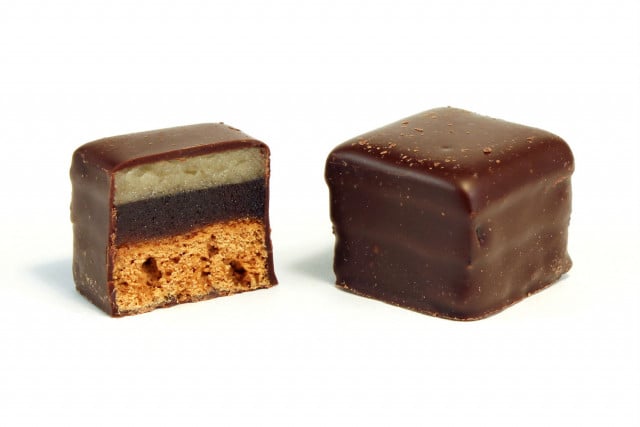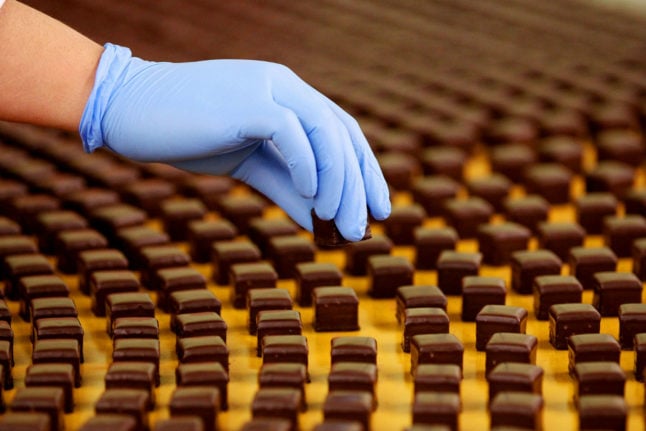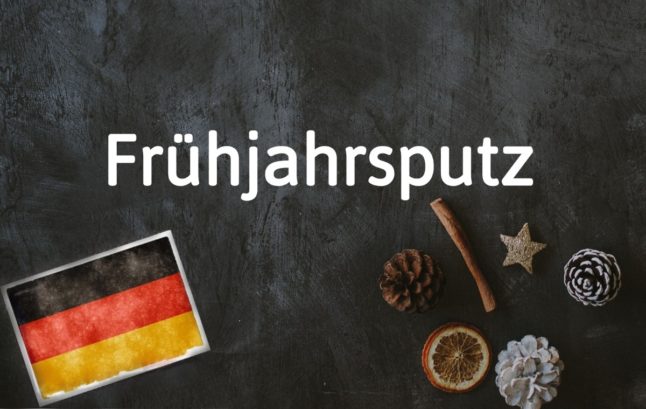What does it mean?
This is a nice compound word, made up of der Domino (domino) and der Stein (board game tile in this context), which is literally translated as “domino tile.” At Christmastime, this word refers to a popular sweet sold in Germany and Austria.
This sweet contains several layers, topped off with a thin layer of (traditionally dark) chocolate icing. It is most known for its cubic shape.
The base layer is der Lebkuchen, or gingerbread, which has a very long tradition of being a popular Christmas treat in Germany.
The next layer is das Gelee, or jelly, made most often from Sauerkirsche (sour cherries) or Aprikose (apricots).
The third and top layer is made from das Marzipan (marzipan).
 Three layers of sweets make up the beloved Christmas praline. Photo: Wikimedia Commons/Kaldari.
Three layers of sweets make up the beloved Christmas praline. Photo: Wikimedia Commons/Kaldari.
Where did it come from?
The Dominostein was invented in Dresden in 1936. Traditional praline sweets, which were quite popular at that time, were costly for many people. A man named Herbert Wendler decided to create the Dominostein as a more affordable option.
They gained popularity as a replacement for pralines because of food shortages during World War II. They were even called Notpraline or “need/distress pralines” during this time. The sweet was layer produced primarily by Dresden-based chocolatier Dr. Ing. Quendt.
December 3rd has been declared as Dominosteintag, or “Dominostein Day,” so get out there and enjoy these special German treats!
Example sentences
Bitte gib mir die Dominosteine.
Please give me the domino tile pralines.
Ein traditioneller Dominostein wird mit dunkler Schokolade hergestellt, kann aber auch mit Vollmilch- oder weißer Schokolade hergestellt werden.
A traditional domino tile praline is made with dark chocolate, but it can also be made with milk or white chocolate.
Wenn man Dominosteine sieht, ist es Weihnachtszeit!
When one sees domino tile pralines, then it’s Christmas time!




 Please whitelist us to continue reading.
Please whitelist us to continue reading.
Member comments